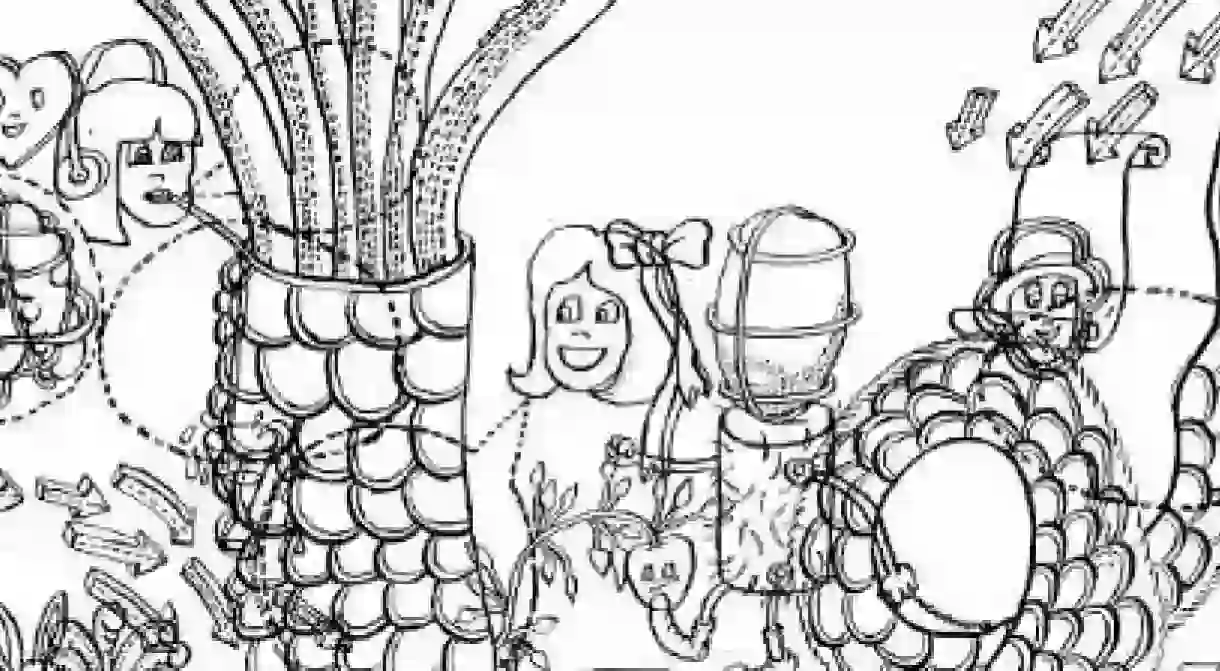Contemporary Artist Amir Farhad: Art For Iran

Iranian contemporary art is often overlooked in the West, overshadowed by the political, social, and economic disputes that have plagued the region since the historic 1979 revolution. However, despite these lingering tensions, Iranian art has flourished in recent years, producing a range of talented individuals. Amir Farhad represents just one of these boundary-pushing artists. His rich drawings and paintings explore the intricacies of modern Iranian life, through a distinctly questioning and often confrontational lens.

Early Life
Amir Farhad was born in 1977, two years before the tumultuous revolution of 1979. The son of a military officer, Farhad grew up on various military and air force bases during the subsequent eight years of war with Iraq. When the war ended, Farhad and his family moved to the Shahrak-e Ekbatan suburb of Tehran, a neighborhood that enjoyed slightly more freedom than other areas of the city. It was here the Farhad first began to explore his artistic talents, nurtured by the suburban-metropolitan atmosphere of the area. He went on to study graphic design at the Tehran Art and Architecture College, before beginning his practice as a working artist in Tehran.

Art as War
Farhad’s work is simultaneously comic and tragic, light and dark, satirical and deadly serious. His canvases are littered with cartoon figures, sketches of objects and nature, often superimposed with colorful paintings and silkscreens. Pen and marker make frequent appearances in Farhad’s art, lending his work the feel of schoolyard doodles or pieces of graffiti. From a distance, they appear as dense masses of scribbles, but viewed up close, the disparate elements complement and contrast with each other in intriguing ways. “I want to fit many things into my work, as if this day is the last day, and this world is the last world, and everything needs to be expressed here and now,” Farhad explains in his artist’s statement. The effect is mentally overwhelming, but visually stunning—there’s so much to decode and interpret in Farhad’s work that it requires several careful viewings to fully comprehend.

There is a distinct Pop Art element in the recognizable figures and bright silkscreened colors of Farhad’s art, but while pop art is fundamentally concerned with surface and aestheticism, Farhad’s deceptively light and colorful pieces have something deep to say under the surface. His works critique the growth of capitalism in Iran, while also questioning traditional ideals. There’s humor in his work, but there’s anger too—and lots of it. “I am not a child of war; I am the war itself,” Farhad says. “My works do not come from war; you see the war in my work. It is an internal war. Look closer – you will see it all there.”

A ‘Parade’ of Wonders
In his recent exhibition, Parade, held at Tehran’s Homa Art Gallery, Farhad explores contemporary Iranian culture and the country’s evolving technological present. Seemingly unrelated characters and objects, from Pinocchio, beaver hats, and animals to quotes and proverbs, fight for space on the white canvases. According to the exhibition catalogue, these works aim to “draw attention to political and social weaknesses” by revealing the transitional and “apocalyptic ambience of Tehran.” The crowded composition and disconcerting mix of elements in the pieces create an atmosphere of anxiety and confusion, as history and tradition brush up against pop culture and modern technology.

Drawing on Mikhail Bakhtin’s theory of the carnivalesque, which responds to and subverts dominant styles through chaos and humor, the images evoke kitsch art and comic books to question the realities and contradictions of modern Iranian society. They react to the huge social and technological changes that Tehran, along with Iran as a whole, has undergone and continues to undergo in the 21st century

A New Tehran
Emerging artists like Amir Farhad work to interpret contemporary Iran through their work, exposing the many-layered complexities of daily life through their own unique lenses. “I am the narrator, and I am illustrating what I have witnessed while growing up in this land,” Farhad explains. In Parade, as in past exhibitions, Farhad describes Tehran and Iran as he sees them, illuminating both the positive and the negative sides of a traditional culture in the Middle East struggling to adjust to the modern age.













